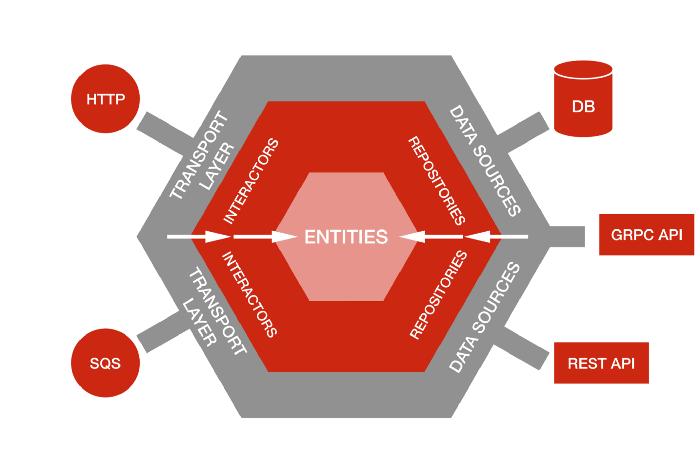Hexagonal Architecture - Ports and Adapters with Interfaces
The idea of Hexagonal Architecture is to put inputs and outputs at the edges of our design. Business logic should not depend on whether we expose a REST or a GraphQL API, and it should not depend on where we get data from — a database, a microservice API exposed via REST, or just a simple CSV file. The pattern allows us to isolate the core logic of our application from outside concerns. Having our core logic isolated means we can easily change data source details without a significant impact or major code rewrites to the codebase. One of the main advantages we also saw in having an app with clear boundaries is our testing strategy — the majority of our tests can verify our business logic without relying on protocols that can easily change.
It's important to note that Hexagonal Architecture came before Clean Architecture, however, both share the same objective, which is the separation of concerns. In fact, the Hexagonal Architecture was one of the architectural patterns that Robert C. Martin (Uncle Bob - author of Clean Architecture) used as a reference to the Clean Architecture. However, Hexagonal Architecture lacks some implementation details, that is where the Clean Architecture comes in, to fill in these "gaps".

